Morningstar Read online
Page 8
After the movie, Mrs. Follett brought us back into the home ec room with its stoves and mixing bowls and deep sinks, stood in front of us wearing a serious expression, and said, “Girls, there’s a difference between necking and petting. Necking is above the pearls, and petting is below the pearls. Necking is okay. Petting is not.”
She nodded solemnly, then handed out recipe cards for fudgies.
I’m sure I wasn’t the only one in this classroom full of daughters of immigrants—Italian and Portuguese and Irish, our mothers at work in mills or diners or industrial cafeterias—who felt confused. Pearls? Who in this town wore pearls? And what was above them? I thought of pictures I’d seen of flappers with their long strands of pearls skimming the hems of their short dresses. I thought of the movies I watched on television on Sunday afternoons with Doris Day or Grace Kelly in cocktail dresses, a necklace of pearls at their collarbones. Where, then, was the line between necking and petting? I needed specifics, clarity, my own set of pearls that fell to the perfect safe length.
Marie Mattias, my cooking partner, had already donned her apron and was collecting the ingredients for our fudgies. It was rumored that she had already kissed a boy, so perhaps this necking/petting thing made sense to her. I watched her place sugar and milk, butter and cocoa powder, rolled oats and peanut butter on our workstation. Beside us, my friend Jane was frowning—not at the recipe but at everything that had happened that afternoon, the dancing ovaries, the discussion of pimples, the pearls.
I lined a baking sheet with wax paper and joined Marie in dumping all the ingredients into a saucepan. We didn’t have to bake the cookies, just drop them by the tablespoonful onto the wax paper and put them in the refrigerator for thirty minutes. When they had cooled and hardened, we would place them onto a silver serving tray and bring them to the boys in shop class. It smelled good down there, musty and woodsy at the same time. When we walked in, the boys lifted their goggles onto their heads and devoured our cookies while we watched.
Later—not that day or even the next, but weeks later—I went home after school with Marie. We were on double sessions: the seventh and eighth graders went to school from seven to noon; we ninth graders went from twelve thirty to five thirty. Marie lived up the street from the school, in one half of a mill house. It was almost dark by the time school ended, and the autumn air smelled of leaves burning and the sharp scent of winter approaching. At her house, her brother lazed on the sofa. He wore blue jeans and a pocket T-shirt, and although he was barefoot he had drawn what looked like the straps of sandals across the arches of his feet, ending in a pointed V between his big toe and the one beside it. This, Marie explained, allowed him to enter restaurants and stores barefoot, as clerks and waitresses thought he had on sandals. The Mattiases had a dog named Frog, and Marie and her brother liked to give him a tablespoon of peanut butter and then watch him try to swallow it. We made fudgies, and while we waited for them to cool we gave Frog peanut butter and watched him smack it loudly on his tongue.
When the cookies were ready, Marie pulled out a Ouija board.
“Ask it anything,” she said.
I looked at her curly hair and black-lined eyes.
“What’s a French kiss?” I asked.
We placed our hands on the planchette and waited. Slowly, haltingly, it moved across the board, spelling out: KISSING WITH TONGUE. Grossed out, I lifted my hands suddenly from the planchette, just as Marie nudged it toward S. Our eyes met briefly. I stood and said I had to go home. Kissing with tongues?
MY SECOND SEX education lesson came, in a way, from my mother. As a Catholic, I was told that a girl saved herself for marriage long before I understood what exactly I was saving. “You don’t buy the cow if the milk is free,” my mother would tell me, another thing I did not understand. What were girls giving away? And why, if boys wanted it, did they not want the girl? If I prodded my mother for answers, she did not respond. The last thing my prudish mother wanted to do was talk about sex. “Let me just say,” she told me once, eyes averted, cheeks red, “you have to really love a man to do that with him.” What was that? I wondered. And why was it so mysterious, so valuable, yet so disgusting?
My mother and my aunts had a terrible term for promiscuous women, one that disturbed me then and disturbs me even more so now. “She’s a pig,” they’d say about the divorcée who dated lots of men or the teenager who got pregnant. Today, I ask my mother not to use that word to describe any woman. But as a girl I just cringed. One thing I knew for certain was that I never wanted to be called that. I had no concept of how girls got pregnant, or even of how sex worked. Once I heard Joan Rivers on The Merv Griffin Show say that she’d read The Joy of Sex and took its advice by wrapping her naked body in Saran Wrap and greeting her husband, Edgar, at the door like that. The audience laughed but I only felt confused. The next time I went to Waldenbooks at the mall, I found The Joy of Sex and flipped through it. The illustrations of naked men and women, pubic hair drawn in squiggly lines, arms and legs thrust in every direction, looked disgusting. “You really have to love a man to do that.”
I was twelve when I got my first period, an event I only anticipated or knew about because my cousin, a year older, got hers the year before. For months I hoped I’d find blood on my underwear, but when nothing happened I forgot about it. Then I went to a birthday party for a girl with the magical name of Staria (at some point it lost its magic when I learned her mother had plucked it from a book about a horse with that name). Staria lived in a new development and had many wonderfully exotic things to marvel at—her family ate at a kitchen table that had benches instead of chairs, for one thing. And her basement was not dirt-floored like mine, or a second kitchen like the ones so many people I knew had, but rather was bright and large with indoor/outdoor carpeting and a door that led outside into the yard. At the party there was a long table with all kinds of mayonnaise-y food—tuna salad and egg salad—something I’d never seen before. We didn’t even have a jar of mayonnaise at home.
“It’s time for lunch,” Staria’s mother announced.
I wore a hot-pink minidress with a scalloped hem and white go-go boots, an outfit bought just for the occasion. As soon as her mother told us it was time for lunch, I stood and went to the buffet table (though of course I didn’t know that’s what it was called, having never heard the word “buffet” before), peering at those finger sandwiches, taking the least offensive-looking one and piling chips onto my plate. There was a hot tray of tiny meatballs in red currant jelly. I took two on their cellophane-tipped toothpicks just to be polite. Where I came from, meatballs were large and covered in red sauce. When I looked up, I saw that I was the first one getting food. Everyone else had formed a line and was waiting. Everyone except a soft-spoken girl named Nancy, who still sat primly perched at the edge of her chair.
“Ann,” Staria said, “since you went first, you can’t be Miss Peanut.”
Miss Peanut? Clearly I had done something wrong, but I had no idea what it was. Hadn’t Staria’s mother told us it was time to eat? My stomach cramped. The smell of mayonnaise, unfamiliar and sweet (perhaps it was actually Miracle Whip?), wafted upward and I had to swallow a wave of nausea.
“Miss Peanut is polite,” Staria continued, “and lets others go first.”
Now my stomach was really hurting, and something strange began—I had my first headache, a pounding that was thunderous and painful. I thought I might have to go to the bathroom—there was one down there! In the basement! Staria’s mother had pointed it out to us when we arrived.
“Today,” Staria announced, “Miss Peanut is Nancy!”
Nancy blushed a deep red. Staria grinned at her, and as she went to bring Nancy a large prize of some kind, my stomachache got so bad that I ran to the bathroom. I’m sure that the other kids thought I’d left out of embarrassment for being the antithesis of Miss Peanut. Crammed into the tiny bathroom—her mother had called it a “half-bath”—I yanked down my underwear and there it was: two smears of d
ark red blood.
That afternoon, after I snuck upstairs and called my mother on Staria’s fake old-fashioned crank telephone that hung on the kitchen wall, trying not to cry; after my mother picked me up and I left the party without saying goodbye or thank you; after my mother silently handed me a strange belt and a box of sanitary napkins; after she showed me how to attach the napkins to the belt; she handed me a slender, mustard-colored paperback, almost more of a pamphlet, with a silhouette of a young woman’s face and some vague title about mothers and daughters. “Read this,” she told me, and I dutifully did, a hot water bottle on my aching stomach, a bulge of Kotex between my legs. The book told me this would happen every twenty-eight days, that I could get pregnant on day fourteen of my cycle, that boys had a penis that resembled a mushroom and a sack below it that contained two balls the size of plums.
Was it any surprise, then, that when someone showed up in ninth grade with a book called The Harrad Experiment, a novel about fictional Harrad College and its experiment to have men and women live together and feel free to have sex, argue about politics and philosophy, change partners, and think and act “freely,” I eagerly read it? And reread it, especially the dog-eared pages 160–167, which describe the act of sex and orgasms in graphic detail? So, I thought, this is what all the fuss is about.
The Harrad Experiment was published in hardcover in 1966, and in paperback a year later. The copy that was surreptitiously passed around my ninth-grade classroom was that original paperback, with a naked college-age boy draping a sheet around a naked girl’s shoulders. They are both tanned and blond, he looking down at her, she looking directly at the reader. It was racy and titillating, that cover. Reading the book as I did in 1970, when teenagers were moving in droves to Haight-Ashbury in search of free love and just a few years earlier Time magazine had featured the Pill on its cover, it seemed to me to be a poster for just that. Initially, Sherbourne Press printed 10,000 mail-order copies sold through an ad in Playboy magazine because the novel was too racy for bookstores. But Bantam promoted the paperback edition that I read with sexy billboards and advertisements. It sold 300,000 copies within a month. Eventually, more than 3 million copies were sold, with reviews posted on Amazon as recently as February 2016.
ONE OF THE rules at Harrad College is that all sports, exercise, and swimming in the pool had to be done in the nude, an idea that I found impossible to imagine. That year, in ninth grade, we had to change out of our clothes and into our gym uniform in tiny shared dressing rooms connected to smelly, moldy showers. My dressing room partner was a girl named Joanne, who, out of embarrassment or perhaps out of bravery, would hustle into our small space, whip off her clothes, and pull on the one-piece pale blue gym uniform, seemingly in one motion. I caught a flash of her flesh, pink and still baby chubby, and then she was snapping up the front snaps while I tried to strategically drape my towel in a way that would hide as much as possible. The thought of climbing the rope, or bouncing on the trampoline, or doing calisthenics naked as Danny Kaye sang “Go, you chicken fat, go!” from the record player, horrified me. What was this place called Harrad? Did people ever really feel comfortable enough to swim naked? In front of other people? Did people ever feel comfortable enough to be naked at all?
Yet the character Harry writes: “Every day when I go to Physical Education, there they are . . . girls . . . naked, swimming in the pool, playing volleyball . . . yelling, screaming, soprano-joyous.” One day, his classmate Sheila plops down beside him at the edge of the pool, water dripping from her breasts, and tells him: “You know just two weeks ago when I first came here and had to walk out in front of everyone naked, I thought I’d die of embarrassment. Now it seems the only way to be . . . naked.” Really? I thought when I read that. Someday I might feel comfortable walking around naked? The idea seemed both impossible and exciting. And very, very far away.
A COUPLE OF years before I read The Harrad Experiment, a boy approached me on the stretch of asphalt that served as our playground, and said, “You want to go out with me?” “Going out” meant that you wore his ID bracelet, stood by the fence with him every morning before school and again after lunch, and maybe met him at the mall on Saturdays. My parents would absolutely kill me if I went out with a boy, even in this benign fashion. Yet the idea that a boy liked me made me consider the offer. This boy was tall and broad-shouldered, dark-haired and strong-jawed. He was also several years older than anyone else in our grade, having stayed back a rumored three times. He wore a leather jacket, short black Beatles boots, tight jeans, and a scowl that was almost frightening. And he liked me? The girl who raised her hand too much in class, wore glasses, and carried around books the size of bricks?
Before I could answer “Okay!” he said, “If you go out with me, you gotta stop using so many big words. No one likes a girl who uses so many big words.”
My vocabulary, honed by taking the monthly Reader’s Digest “How to Improve Your Word Power” test and reading books far beyond my ken, was one of the things of which I was most proud. To not use it seemed almost a punishment. I guess I took too long to think about his offer because he looked at me in disgust and said, “Ah, forget it. You just like big words, not me.”
When I read Ruth’s observation to Stanley in The Harrad Experiment, “Anyway, darned few men want to marry a brainy woman. They want somebody to tell them they are wonderful, and be ready to cuddle with them or baby them,” I thought of that boy. Was it true that all boys were like him? Stanley does suggest to Ruth that perhaps a girl could be cuddly and intelligent, but Ruth responds, “Sure, intelligent. She can read the bestsellers and take on little civic problems in her women’s club . . . but let her really get her own interests . . . let her not be completely children and house oriented . . . then watch out, she’s in for trouble.” Later in the novel, Beth describes love like this: “Love is something else . . . Something more dynamic, all consuming. Something that makes you want to kneel down before somebody, humble yourself to him. Give yourself irrevocably.” These debates, which continue throughout the novel, articulated my own confusion about sex and love. What was the difference? How did I know if the feelings I had were sexual ones or real love? Was it really okay to have many sexual partners and someday think, as Valerie does, “Sometimes I wake up in the night and for a sleepy moment I may forget whether I am with Stanley, Jack or Harry, and then I feel warm and bubbly.”
Yes, The Harrad Experiment helped me, a sexually naïve, even prudish fourteen-year-old girl, to put words to all I was wondering about in the shifting values of the 1970s. But arguably more important, it told me how sex worked, what actually went on between a man and a woman when they made love, what went where and how it felt. The pages that I read over and over—pages 160 to 167—were exactly what I needed to understand. Reading them made me blush and squirm uncomfortably, but they also empowered me. Finally I understood.
The scene involves two characters who are practicing a method of sexual intercourse called sexual communion, a concept based on Hindu Tantric literature. Before Sheila and Stanley try sexual communion, Rimmer introduces philosophical and historical information about it. The basic idea is for a couple to delay orgasm—a word whose meaning I had to run to the dictionary to find. “A climax of sexual excitement, characterized by feelings of pleasure centered in the genitals and (in men) experienced as an accompaniment to ejaculation.” What? I thought when I read that. Pleasure in the genitals? I remember slamming the fat dictionary shut, sitting on my bed, and trying to absorb what I’d just read.
But this scene between Sheila and Stanley made it all seem less scary, less confusing, and even exciting. Stanley enters her and they lie side by side reading to each other. At one point, Sheila tells him she’s about to explode, at which point I realized that women get to enjoy this too. For seven pages, they read out loud and touch each other and shift positions, until finally, on page 167, they can’t take it anymore. The book falls to the floor with a thud, and Stanley tells Sheila he’s pas
t the point of no return. To my surprise and delight, it’s Sheila who kisses him wildly and shouts, “Oh, God! Darling . . . darling . . . so have I. So have I!”
Like so many of the 1950s values and ideas on which I’d been raised, sex had been challenged in this changing world I was living in, The Harrad Experiment brought me headfirst into understanding—and almost ready to join—the sexual revolution of the 1970s. A fear of pregnancy, the wrath of my mother, disappointing Jesus, and a general “good girl” hang-up kept me safely innocent and relatively pure through high school. It was years before I felt comfortable being naked, years before I had my first sexual relationship, years before I fell in love. Yet it was a book that taught me about sex and love and how to not confuse the two, a book that told me what even my sex ed teacher and my mother could not.
Lesson 9: How to See the World
• Doctor Zhivago BY BORIS PASTERNAK •
I GREW UP LISTENING TO MY FATHER’S STORIES OF his days in the navy. He described Lombard Street in San Francisco—the crookedest street in the world!—and how in the tropics it would rain on only one side of the street. He told me again and again his stories about how in Morocco he once ate dog for dinner—they starved the dog for a week, then fed it rice, and then killed it and cooked it, and the rice was the stuffing, right inside the dog!—and in China he ate “hundred-year” eggs, which were buried and preserved and smelled and tasted rancid—they made me gag but I had to eat them. You can’t insult your hosts. He skied in Greece; he stood at the railing of a ship and threw pennies into the Caribbean off the coast of Haiti for children to dive for and collect; when he lived in Naples he drove a Fiat Topolino, which was the smallest car in the world; in China he saw people die in the street from starvation. And I, the little girl on his big lap, tracing the tattoo of an eagle in front of a setting sun on his forearm, wanted to do all of those things and more. California and Morocco and Greece and Italy and China . . . “Where else?” I used to ask him. He smelled of Old Spice and Vitalis and Ivory soap and cigarettes. “In Cuba I was bit by a mongoose,” he told me, “and I had to go into the hospital and get rabies shots right in my stomach.”

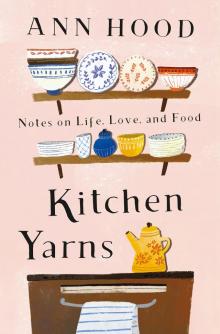 Kitchen Yarns
Kitchen Yarns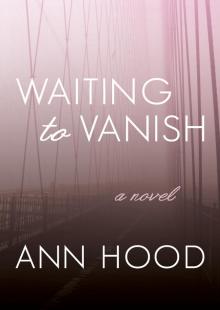 Waiting to Vanish
Waiting to Vanish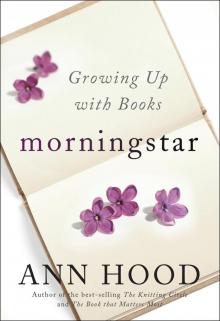 Morningstar
Morningstar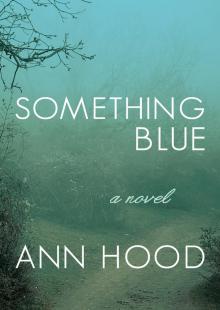 Something Blue
Something Blue Providence Noir
Providence Noir Somewhere Off the Coast of Maine
Somewhere Off the Coast of Maine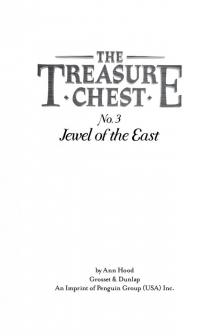 Jewel of the East
Jewel of the East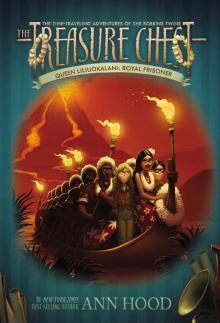 Queen Liliuokalani: Royal Prisoner
Queen Liliuokalani: Royal Prisoner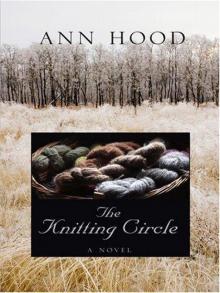 The Knitting Circle
The Knitting Circle Leonardo da Vinci: Renaissance Master
Leonardo da Vinci: Renaissance Master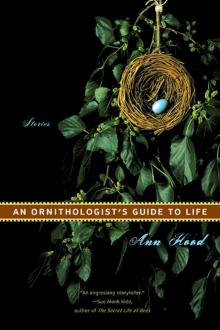 An Ornithologist's Guide to Life
An Ornithologist's Guide to Life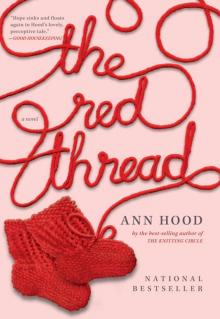 The Red Thread
The Red Thread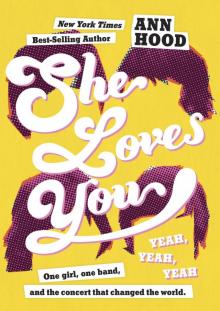 She Loves You (Yeah, Yeah, Yeah)
She Loves You (Yeah, Yeah, Yeah)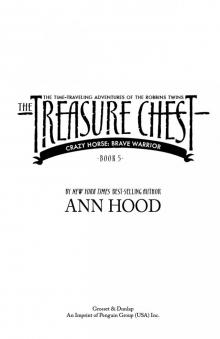 Brave Warrior
Brave Warrior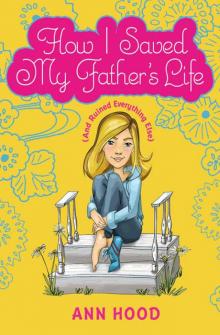 How I Saved My Father's Life (and Ruined Everything Else)
How I Saved My Father's Life (and Ruined Everything Else) An Italian Wife
An Italian Wife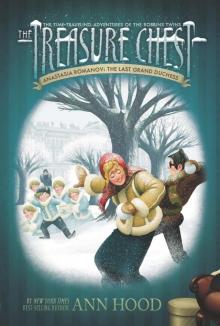 Anastasia Romanov: The Last Grand Duchess #10
Anastasia Romanov: The Last Grand Duchess #10 Prince of Air
Prince of Air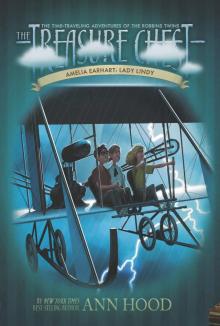 Amelia Earhart: Lady Lindy
Amelia Earhart: Lady Lindy Places to Stay the Night
Places to Stay the Night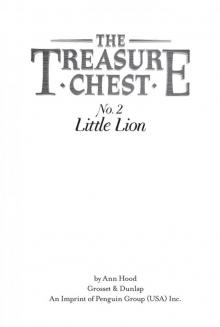 Little Lion
Little Lion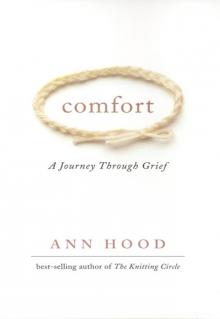 Comfort
Comfort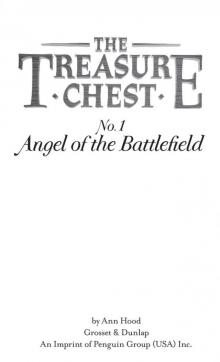 Angel of the Battlefield
Angel of the Battlefield